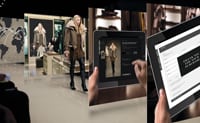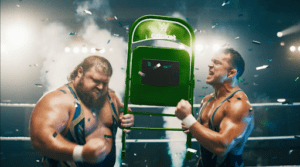By Steve Cole
A recent Siegel+ Gale ranking listed grocery as the sixth simplest industry for global consumers to navigate. However, e-retail giant Amazon, who’s been moving in on grocery, was ranked second as the simplest brand to navigate.
 In the age of the online consumer, brick-and-mortar grocers need to integrate new technology into the traditional shopping experience to compete with their online counterparts. This is easier said than done, as grocers must avoid overcomplicating the shopping experience with distracting technology.
In the age of the online consumer, brick-and-mortar grocers need to integrate new technology into the traditional shopping experience to compete with their online counterparts. This is easier said than done, as grocers must avoid overcomplicating the shopping experience with distracting technology.
While the adoption of e-commerce varies across the food retailing industry, there are three shopping habits grocers can digitize now to enhance loyalty and convenience during the grocery-buying journey.
1. Creating shopping lists
Many consumers build shopping lists and research recipes on their smartphones. Retailers can support these habits by offering list-making and menu-planning through their websites or mobile applications. For example, if a shopper buys the same brand of milk and deli meat every time she goes to the grocery store, those two items will be tagged as “favorites” and automatically appear on her list. Additionally, digital menu planning allows shoppers to add items to their grocery lists based on what they want to make for dinner.
2. Browsing weekly circulars
With a recent study indicating that 80% of consumers use their smartphones to conduct grocery shopping activities, it’s no surprise that grocers’ weekly circulars are moving to digital channels. In addition to allowing shoppers to view circulars in the format most convenient for them, it also fits hand in hand with digitized shopping lists. Shoppers can find on-sale items for the week and, with the click of a button, add the item and its coupon to their lists. In addition, apps such as Retale are offering digital versions of numerous retailers’ weekly circulars to create a streamlined digital circular destination.
3. Couponing
The popularity of digital coupons is skyrocketing. Take for instance a 2013 report from Business Insider that estimates the number of mobile coupon users will increase to 53.2 million by 2014. In addition to mobile, shoppers are also turning to the web, social media and other channels to access digital coupons. While consumer packaged goods companies typically dominate coupon distribution – in 2012 there were 305 billion CPG coupons, print and digital, distributed in the U.S. – retailers have a lot to gain from digital coupons, especially when they are personalized for that individual shopper.
How traditional habits become digitized
To successfully enhance traditional shopping habits with digital technologies, grocers need to build a strong foundation of digital product content, including images and information, for the items they sell. Without detailed and accurate product content, including multi-angle images, nutrition facts, ingredients and marketing highlights, shoppers will not feel comfortable venturing into the digital realm to research and buy.
Shoppers expect the grocery store to be accurately and completely represented on their smartphones. As an example, shoppers will become confused and frustrated if a grocer has only 30 percent of its in-store products represented digitally. There must be consistency across the product content that customers see in the weekly circular, on the website and within the mobile coupon they receive – all compared to what’s actually on the shelves. If grocers cannot meet that threshold, shoppers might visit a competitor that can instill greater confidence across the digital-meets-physical path to purchase.
Digital coming to a store near you
Digital also opens doors to migrate through “futuristic” technologies, such as iBeacon. Grocers are implementing location-based apps that tell shoppers exactly which aisle of the store certain items are located. On the flip side, grocers have knowledge into where shoppers are located within their stores. Some grocers have also started implementing kiosks that put together menus for shoppers and direct the shoppers to each product’s location. Augmented reality apps are also on the horizon, enabling shoppers to hold up their smartphones and open an app that uses the camera to recognize the product and augment what the customer is seeing to provide recipes, coupons and other value-add engagements.
By starting with the basics to enhance grocery shopping habits with digital to eventually implementing advanced in-store digital technology, grocery stores can get a leg up on their online competitors.
Steve Cole is the chief marketing officer at Gladson. He can be reached at scole@gladson.com.


 Network
Network

